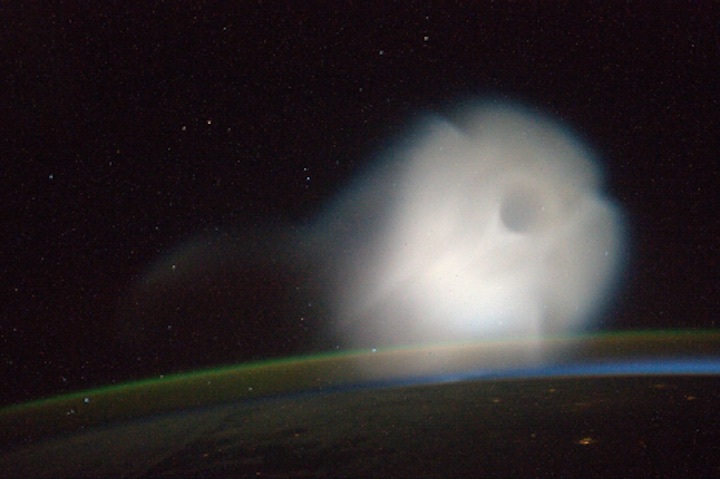30.09.2022

August 20, 1991 - West of Tula1
![]()
This entry relies on the Timothy Good’s book, “Alien Update”. There appears to be no other source.
The sighting
Surprisingly, the description in Good’s book is very informative. We know the time, approximate location, direction of observation, and approximate elevation of the object. We even have a sketch and reference to a constellation of stars :
At 1:35 a.m. on August 20, 1991, Aeroflot flight 2523 took off from Voronezh Airport, heading for St. Petersburg. One of the passengers on board was Igor Yadigin, the aviation mechanic whose story of a close encounter near voronezh airport is described earlier.
At about 2:05 a.m., one of the crew members invited Yadigin to the flight deck. As he entered, Igor was shaken by an extraordinary sight in the sky (Fig. 11.2).
The jet was flying at an altitude of about 10,000 meters. To the right could be seen a sphere-like object, emerald in color. The sphere was surrounded by a milky white hemisphere, through which the stars were visible. Above and to the left of his viewpoint could be seen the Great Bear constellation. From the central sphere, a beam of light extended to the ground. In the estimation of the crew members, the diameter of the central sphere was about 400-800 meters and it was stationary at a distance of not less than 50 kilometers. Igor and the crew members then noticed the navigation lights of a jet, which was changing tis course to avoid the sphere. In Igor’s opinion, the size of the jet was that of a grain compared to a plate. The total duration of the sighting was about fifteen minutes, after which the apparition simply vanished....2
If we are to believe the book, the sighting happened around 2:05 AM and not 2:10 AM. It appears the report and sketch were made from memory so one has to consider either time to be just an approximate value.
Analysis
The first thing to note is the time given is local time. If it were UTC, it would have been after sunrise. The area of Tula is UTC +3, which means that the Universal time (GMT) was actually 2305-2310 on the 19th of August.
The second thing to note is that the plane was flying north towards St. Petersburg. Also to the north was the Plesetsk Cosmodrome. Not surprisingly, there was a launch just before the sighting.
1991 August 19 - . 22:55 GMT - . Launch Site: Plesetsk. Launch Vehicle: Topol’.3
The Topol missile was a three stage solid fuel ICBM. The third stage ends it burn about 180 seconds after launch but the rockets have been known to create long duration exhaust halos like the one observed from the ISS in 2013.


The rough azimuth of the object shown in the sketch4 would have been around azimuth 45 degrees based on the position of Ursa Major (The pointer stars, Dubhe and Merak, were both at azimuth 4 degrees). The azimuth of Plesetsk Cosmodrome was about 10 degrees at a distance of 600 miles. In the sketch, the orientation of the constellation of Ursa Major was incorrect (One has to go back to about 3-4 hours to achieve this orientation) but one has to remember, this sketch was probably done from memory. It does provide us with the general direction of the UFO. Assuming the trajectory of the missile was eastward (most of these missiles were launched towards the Kura Peninsula on the Pacific coast), it would have appeared over the horizon further to the east than Plesetsk. To be visible from that distance, it would had to have been at an altitude of 120-150 miles.
Sunrise for Plesetsk was around 4:30 AM and nautical twilight began around 2:15 AM. This would indicate that the sun could illuminate any cloud around the vehicle and produce the “twilight effect” that can produce spectacular displays involving rocket launches.
Conclusion
The time of the Topol missile launch being within ten to fifteen minutes of the sighting cannot be ignored. The aircraft was looking in the direction of the launch site and the object had the characteristics of a Topol missile launches in a pre-dawn sky. The only possible reason to reject the explanation is the distance but rocket launches have been seen from this distance before especially when the “twilight effect “ is a factor. This case can be explained as a Topol missile launch test and removed from the catalog
Quelle: SUNlite 4/2022
